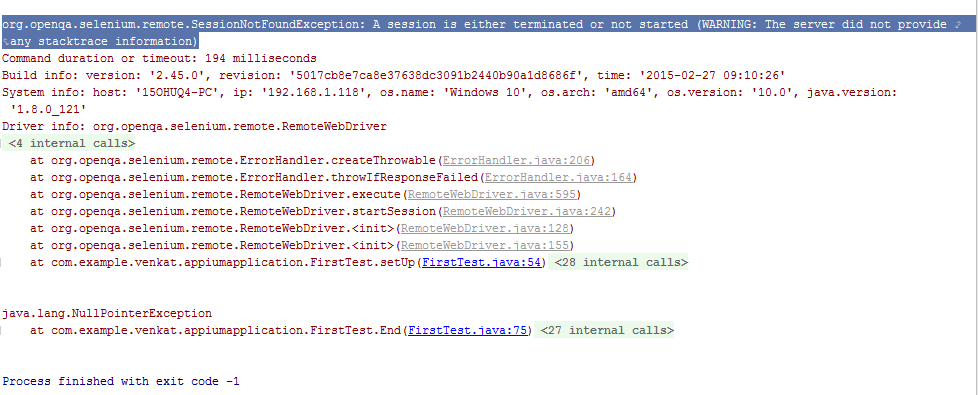

- Appium android capabilities example how to#
- Appium android capabilities example driver#
- Appium android capabilities example for android#
- Appium android capabilities example pro#
To create a java class, please see the below image:
Appium android capabilities example how to#
Appium android capabilities example driver#
Appium android capabilities example pro#
DEVICE_NAME” and value as “ iPhone 11 Pro Max“Ĥ. You have to pass the key as “ deviceName” or “ MobileCapabilityType. PLATFORM_VERSION” and value as “ 13.6” ģ. You have to pass the key as “platformVersion” or “MobileCapabilityType.

You have to pass the key as “ platformName” or “MobileCapabilityType. You have to pass the key as platformVersion or MobileCapabilityType.

You have to pass the key as platformName or MobileCapabilityType.
Appium android capabilities example for android#
You have to pass the key as “ appActivity” and value as “ .PeopleActivity” Īdding desired capabilities for Android How to add desired capabilities for iPhoneġ. It will help the Appium server to identify the attached Android devices uniquely. You have to pass the key as “ appPackage” and value as “ “ħ. AUTOMATION_NAME” and value as “ UIAutomator2“ĥ. It will help the Appium server to identify the attached Android devices uniquely. To interact with your Android devices with your Appium server, we have to pass specific desired capabilities. How to add desired capabilities for Android For more details on Desired Capabilities, click this link. But ultimately, all the parameters will be sent in a JSON format to the server. Each Appium client builds capabilities in their way. Step 4) Now Create a small test Program for ‘Calculator.app’ to sum two numbers. Appium clients send this information to the Appium server when a new session starts. APPIUM Test Case for Native Android App (Calculator) Step 1)) Download ADT eclipse plugin or download ADT bundled separately here Step 2) Open Eclipse and Create a new Project > Package > Class Step 3) Import Selenium library and Testng inside that new project. Desired Capabilities are parameters sent as a key-value pair encoded in a JSON format to interact with Android/iOS devices. In Appium testing, we need the desired capabilities to interact with devices. Please add below dependencies in your pom.xml as shown in the above image. Import .We have to add the testNG dependency in the pom.xml for verifying your application. Create new class file under Android package in eclipse with name SimpleEmulatorCalcTest and paste bellow given test script in it.


 0 kommentar(er)
0 kommentar(er)
